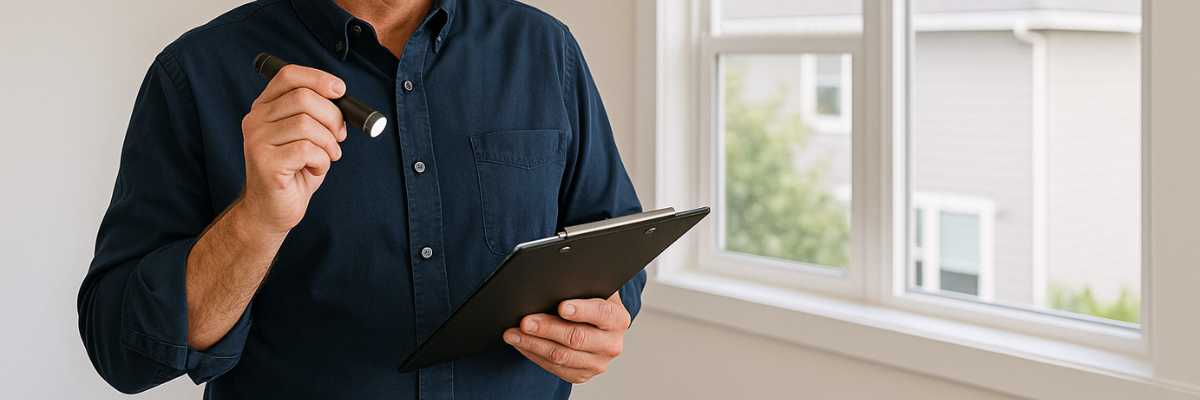What Does A Building Inspector Check?
A building inspector checks many things to ensure the safety and soundness of the building.
Consistency of Structure
A building inspector's primary and most crucial examination is the building's structural integrity. A building inspector will check the roof with the flooring as well as look for walls and foundations. The inspector searches for evidence of deterioration, damage, or shoddy construction techniques that can endanger the structure of the building. For example, sagging roofs, uneven flooring, & foundation fissures could all be signs of major structural problems that require emergency care.
Basement And Stumping
Because the foundation serves as the framework for the entire structure, it is an essential part of the examination. Inspectors look for any signs of issues such as settling, water damage, or cracks. They also evaluate if the foundation is constructed and proportioned adequately for the local environmental circumstances and soil type. A weakened foundation can cause serious issues, such as the structure collapsing.
Roofing And Guttering
Another crucial area to evaluate is the roof. The inspector looks for damaged, missing, or incorrectly installed gutters, flashings, or shingles. They evaluate the roof's capacity to efficiently drain water to avoid leaks and ice buildup. Building inspectors also check ice dams and other problems associated with wetness. To guarantee that the building is energy-efficient and free from condensation issues, proper insulation and roof ventilation are also assessed.
Plumbing Structure
The plumbing system, including the sewage and water heater systems, fixtures, & pipelines, is carefully inspected by inspectors. Building inspectors look for any leaks, rust, or obstructions that can cause contaminated or damaged water. To make sure the system is operating properly, tests are also performed on the drainage and water pressure. The inspector also makes sure that all plumbing work conforms with local codes.
Electrical Framework
One important safety element that the inspector closely examines is the electrical system.
They check that everything is placed properly and safely by looking at the outlets, light fixtures, circuit breakers, and wiring. The building inspector looks for improper grounding, overloaded circuits, and obsolete or dangerous wiring. Also, they confirm that there is no fire risk associated with the electrical system's abilities. They confirm that it will be safe to supply the building's energy requirements.
Air Conditioning System
HVAC systems (heating, ventilation, and air conditioning) are necessary to keep indoor environments cozy and healthy. Inspectors assess the efficiency, functionality, and installation of the HVAC system. They examine the ventilation, ducting, air conditioner, and furnace. To maintain high air quality and stop mould growth, proper ventilation is essential. Additionally, inspectors confirm that the system conforms to energy efficiency requirements.
Airflow and Insulation
Ensuring energy efficiency and indoor air quality requires proper ventilation and insulation. Inspectors verify that crawl spaces, attics, and walls have enough insulation. To avoid moisture buildup and lower the chance of mould and mildew, they keep themselves aware. Building inspectors also make sure that ventilation systems are operating properly.
Doorways and Windows
The installation, functionality, and energy efficiency of windows and doors are examined. Inspectors search the area around these apertures for cracks, leaks, or evidence of water damage. To make sure the structure is safe and energy-efficient, they also evaluate the condition of the locks and seals. Windows and doors that are built correctly lower energy expenses and improve a building's overall comfort.
Exterior Elements
The external components of the structure, such as the paint, stucco, brickwork, and siding, are examined for wear, damage, and indications of water intrusion. The inspector looks for any indications that the outside requires upkeep or repair, such as cracks or peeling paint. Maintaining the building's external appearance and shielding the structure from the weather require regular upkeep.
Crawl and Basement Spaces
Although they are frequently disregarded, crawl spaces and basements should always be inspected. The inspector searches for evidence of pest activity, mould, or water penetration. In these regions, they also evaluate the state of the insulation, support beams, and foundation walls. To avoid moisture issues that may result in structural damage & poor indoor air quality, proper drainage and ventilation are essential.
Safety of Fires
Priority one for any building inspection should be given to fire safety. Carbon monoxide, smoke, and fire extinguisher detectors are checked for presence and correct installation by inspectors. Building inspectors assess emergency lighting, fire doors, and exits within the building as well. The building conforms with local fire safety requirements, and the inspector works.
Railings and Balconies, Stairs
We examine for stability, correct installation, and safety on balconies, railings, and staircases. Inspecting these components, the inspector makes sure that the baluster spacing and railing heights comply with local building requirements. To determine whether these regions are dangerous, they also look for wear or damage. Stairways and balconies must be built and maintained correctly to prevent accidents and ensure the safety of users.
Interior Finishes
The walls, ceilings, and floors that make up the interior finishes are examined for flaws; including cracks, water damage, or incorrect installation. The inspector looks for evidence of mould, peeling paint, and uneven surfaces. Additionally, they evaluate if the materials fulfil the necessary criteria and their quality. Inside finishes that have been installed and maintained correctly add to the building's overall strength and beauty.
Mould and Moisture
Mould and moisture are major issues in every building examination. The inspector searches for indications of leaks, water damage, or high humidity patches that might support the formation of mould. To find hidden moisture in floors, walls, and ceilings, they employ moisture meters along with other instruments. Moisture problems need to be identified and addressed immediately because mould can lead to major health risks and structural damage.
Pest Infestation
When it comes to termites, rodents, and other pests; that can harm a building or endanger the health of its residents, inspectors look for indications of infestations. They search for signs of possible pest problems, such as droppings, chewed cables, or structural damage. To stop additional damage, the inspector could suggest treatment and repair methods if evidence of pests is discovered.
Code Compliance and Zoning
Inspectors verify that the building conforms with local building codes and zoning restrictions in addition to examining its exterior. To ensure that the construction complies with all legal requirements, they examine blueprints, permits, and other documentation. This will involve examining building usage, setbacks, and height limits.
Environmental Dangers
Inspecting also looks for possible environmental risks such as radon, asbestos, and lead paint. If not appropriately handled, these drugs can present significant health hazards. If there is a possibility that there are environmental risks, the inspector might advise testing and cleanup. To protect the building's tenants' health and safety, these problems must be resolved.
Compliance with Accessibility
Inspectors verify that commercial or multi-family buildings adhere to accessibility guidelines, including the Australians with Disabilities Act (ADA). Accessibility for people with disabilities is guaranteed at entrances, restrooms, and common areas. Inspecting entryway widths, counter heights, and the availability of ramps and elevators are some examples of this. To enable all building inhabitants to use it, accessibility compliance is necessary.
Location and Absorption
Grading, drainage, and landscaping are among the other aspects of the building's site that the inspector assesses. To avoid structural damage and moisture issues around the foundation, water must not pool. This can be achieved through proper drainage. In addition to making sure the gutters, downspouts, and drains are operating properly, the inspector works. They make sure the land is graded away from the building.










